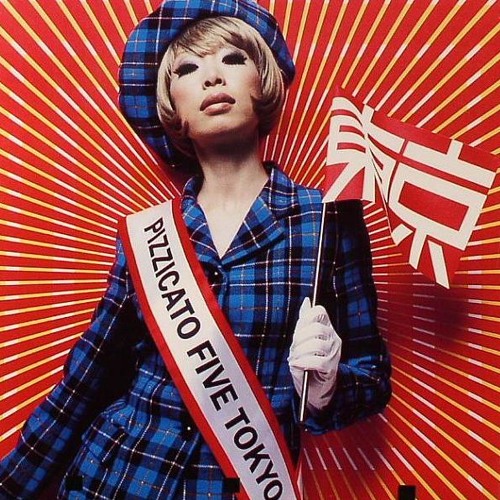odd and mysterious, but harmless (a pointless thing that I enjoy)

I’m currently re-reading a number of Japanese novels for what might or might not become my next book (of writing/criticism). I read most of the books somewhat recently — maybe two or three years ago. Re-reading a book doesn’t offer the same experience, especially if so little time has passed.
It’s interesting, though, for which books re-reading them almost becomes a chore (even when I truly enjoyed them earlier) and which books shine yet again. Maybe that’s what separates truly great literature from good literature.
The book that complete blew me away — again — is Mieko Kawakami’s Breasts and Eggs. Everything about it is completely magical and engrossing, an incredible emotional experience.
Looking around for a picture to use here, I came across an article about the book that contains the following part:
"The characters and stories that appear in Japanese literature tend to perpetuate Orientalist views — the idea that Japanese people are slightly odd and mysterious, but harmless," she explains. "I don't want to write anything that helps to reinforce that kind of a misunderstanding. I made an effort to depict life as it truly feels to live it in Japan."
This sounds familiar, doesn’t it? Aren’t a lot of discussions around Japan in the West focused on the idea that Japan is filled with people who are “odd and mysterious, but harmless”?
Why does all AI art look so similar? Why is it so tacky? Caroline Mimbs Nyce explains it here.
New Yorker magazine published a long text by Annie Ernaux about the time she had cancer. It includes some thoughts on photography.
Ian Frazier wrote Great Plains and Travels in Siberia, two books that deeply impressed me when I read them (which by now must be a decade ago). Now, there’s a new book — about the Bronx. I haven’t read it, yet. But this article makes it sound really intriguing.
For the longest time, I have argued that discussion photography in relation to what you might call reality is a bad idea. It’s mostly because it ignores the basic fact that we view and interpret photographs based on where we’re coming from — our biographies, our ideologies etc. So trying to offload the mess we often make with photographs onto the photographs (or, even worse, those who take them) isn’t a good idea.
Maybe people will finally stop talking about photography and reality when what is described by Sarah Jeong in this article has become so common that we can’t escape it. “We are fucked,” she concludes (her emphasis).
Well, no, I don’t think so at all. Now, we can finally talk about what really matters: our uses of photography and how what we believe and want to believe shape how we create meaning from photographs. It doesn’t matter whether photographs are “real” or not (which ever since the first days of photography was an absurd notion to begin with, given the layers of artifacts piled on top of photographs).

One of the first things that got me interested in Japanese was music, specifically the one made by Pizzicato 5. In the mid to late 1990s, their music made it to the West, and I was hooked. That language sounded so interesting — and simple (which it kind of is, as long as you don’t try to learn how to read or write it).
Pizzicato 5 were part of Shibuya-kei, a musical movement that centered on the part of Tokyo it’s named after (Shibuya). Find out all you ever wanted to know about Shibuya-kei here (conveniently, the article includes a lot of music to listen to).
In one of my earlier emails, I shared an article about Bertolt Brecht’s photomontages. I now have another article to share about the same thing (and a lot more). This one, written by Victoria Baena, goes into a lot of details.
Among his tactics for short-circuiting empathy and catharsis were quick transitions between scenes, placards addressed directly to the crowd, and clashing stylistic registers to underscore the very staginess of the show. He famously called this the Verfremdungs effect, a way of “making strange.” The “V-Effect” often contributed to the plays’ humor (as in Arturo Ui’s versified hymn on cauliflower: “My dear vegetable dealers, things/Are not so simple. Only death is free”), but it also encouraged the audience to reflect on the stakes of the historical and social situation at large.
When I had the exhibition, I talked to a lot of journalists, and the most painful questions for me were about how art can really change things. I never had an answer to that question. At first I tried to make something up, to conjure an answer up out of thin air. Then I just let my irritation get the best of me and started saying, “I don’t know. I’m just doing a pointless thing that I enjoy. I don’t know if it will make a difference or not.”
Looks like there is a new documentary about Leni Riefenstahl. And it promises to be a good one: “the film is at its most grimly compelling when it puts her on stage, pinned down by her accusers and fielding questions with a mix of wary contempt and sudden explosions of incandescent rage.”
And that’s it for today. It’s Labor Day in the US, one of the few holidays. I’m now going to enjoy what remains of it.
Thank you for reading!
— Jörg